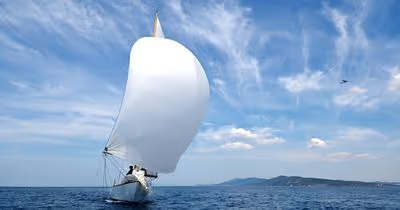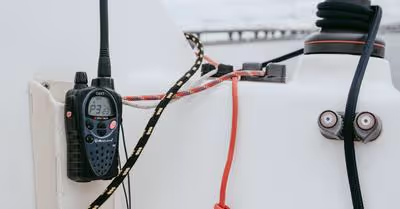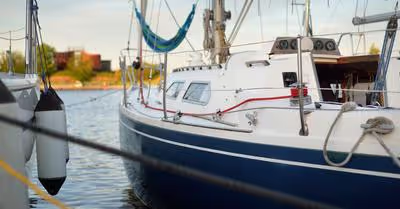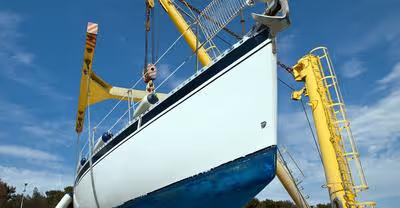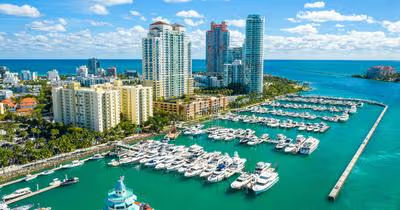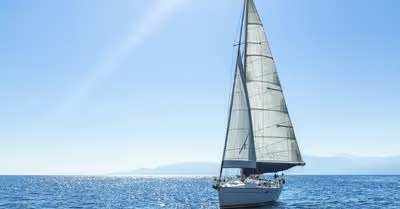Table of Contents
How To Heat A Sailboat
As the mercury takes a dip, you may be tempted to stay away from the waters and feel warm and cozy at home. But you don’t always have to let cold weather keep you away from a good boat party. Let us look at some methods to keep your sailboat cabin warm and cozy.
Propane Heaters
If you love to go on your boat frequently, consider installing a propane heating system. This heating system is among the most popular for sailors who spend nights out in the ocean.
If you are planning to install a propane heating system, remember that you will frequently need to carry around gas bottles, which can cause a little inconvenience. But if you will be away from the shore for a while, propane heaters might be your best option. You are carrying separate fuel for them, so you don’t have to worry about liquid fuel.
To install a fixed propane heater, you may need to cut a hole in your boat to make way for the exhaust pipe. Some yachts come with propane stoves, which means gas lines are already installed. You can remove the stove and use the lines for installing the heater.
Another option is a portable propane heater, similar to the one you can use while camping or during other outdoor activities. Many sailors design a box to hold the heater in place and often place it right below a ventilation hatch to allow the fumes to escape the cabin.
However, portable propane heaters are dangerous on any shipping vessel. If you head into choppy water, the heater can be thrown in random directions, posing a severe fire threat.
Pros of Propane Heaters
- They offer clean and efficient burning to keep your boat warm.
- Propane burns well, but it doesn’t burn a hole in your wallet. It is cost-effective and efficient.
- Easy to use and does not require any complex processes to get started.
Cons of Propane Heaters
- The system is a little expensive to install as the material of the heater, casing, and linings need to meet marine specifications.
Electric Heaters
Electric heaters are an excellent option for sailors who occasionally sail during the winter or like to spend time on their boat while it is docked. Boat electric heaters usually run on 12-volt dc and heat the cabin much like a space heater you use at home. These heaters can be fixed or movable.
The mechanism is exactly like other electric heaters, where a series of coils are heated using electric power from the boat’s alternator or batteries. A fan blows air over the coils, causing hot air to flow in the cabin. The hot air is then blown into the cabin using a blower.
Pros of Electric Heaters
- They are safe and reliable. They can quickly heat the cabin without burning any fuel.
- They are efficient and cost-effective. They have among the lowest running costs.
- They are environment friendly as no fuel is burnt, and no fumes are emitted.
Cons of Electric Heaters
- They require high amounts of electrical power. It is best to use them when connected to shore power or when the engine is running, or they can drain the batteries.
Heating Stoves
Depending on the amount of time you spend onboard your boat, you may consider investing in a heating stove. These wood-burning stoves are a good source of heat and can also be used to cook food. These stoves accept different kinds of fuels, ranging from biomass, sawdust, and other forms of wood.
The structure of the stove is built using cast iron or steel. A firebox is used to hold the fuel and is enclosed using fire bricks. Ventilation and exhaust systems are often installed to ensure that harmful fumes do not enter the cabin.
Pros of Heating Stoves
- They are fuel-efficient and often burn less fuel than other fuel-operated stoves.
- They have a high heat output, which means less fuel will be required to attain and maintain the temperature.
- With proper ventilation and the correct type of fuel, you can reduce harmful emissions.
Cons of Heating Stoves
- Expensive to purchase and install.
- They can heat up quickly but can prove dangerous if someone touches the hot surface.
Forced Air Furnace
Forced air furnaces are an excellent option for heating your sailboat. These furnaces can use different fuel types ranging from oil, propane, or natural gas. The mechanism is simple. The furnace takes air from outside, runs it over some heated coils, and blows it into the cabin.
Air furnaces are expensive to install. To get the most out of your furnace, you will need a duct system installed to minimize energy wastage. As you may expect, installing a furnace can run upon the installation bill. But if you are planning to sail for extended times during the winter, you will get a good return on your investment.
Pros of Forced Air Furnace
- Effective and efficient for large cabins.
- They will prove to be among the most cost-effective options if you have a large cabin.
- The process of heating ensures your cabin gets cozy very quickly.
Cons of Forced Air Furnace
- Ductwork and installation can be time-consuming and costly.
- Maintenance and routine cleaning are essential. Otherwise, mildew, mold, or other impurities can affect the heating system.
Reverse Air Conditioners
If you sail in an area that requires air conditioning during the summer and heating during the winter, you can get an air conditioning system that offers a heating function. This will save you a lot in terms of investment in a new heating system because you can use the same system to cool and heat the cabin to ensure optimum temperature throughout the year.
Pros of Reverse Air Conditioners
- You only need one system that can be used in summer and winter.
- They offer air purification as a bonus.
- Easy to maintain and use.
Cons of Reverse Air Conditioners
- Installation and running costs are pretty high because they require a lot of power to run.
Use Engine Heat
This system can be used on large boats with a big engine and a cooling system. The coolant lines run close to the cabin, and a blower blows air over these hotlines. The air becomes hotter and is blown into the cabin.
This system works similarly to the cabin heater on your car or other road vehicles. It is one of the most efficient ways to keep your boat warm while the engine is running.
Pros of Engine Heat
- No additional expensive equipment needs to be installed. The system relies on the engine’s cooling system.
- There is no additional noise or running expenses associated with this system.
Cons of Engine Heat
- The engine needs to be running for this system to work, which can quickly run up fuel costs.
Hydronic System
A hydronic system on a boat works similarly to a household water heating system. A fluid is heated and circulated in tubes that have been laid around the cabin. There are fans located in different areas around the cabin, which blow air over these heated tubes, letting hot air enter the cabin.
The hydronic systems can also keep water hot for use on the boat. These hydronic systems are smaller than water heaters, making them convenient for installation on small boats.
These systems require electric power to operate the fans and the pump. When the system is started up, it draws significant amounts of power because it needs the energy to heat the coolant to the correct temperature.
Pros of Hydronic System
- The system allows varying the temperature between different zones.
- They ensure minimum heat losses.
- Very quiet, and you can barely notice them running.
Cons of Hydronic System
- Take time to heat up and reach the set temperature.
- Maintenance is expensive.
- Installation costs are pretty high.
Recent Articles





